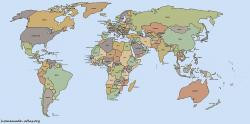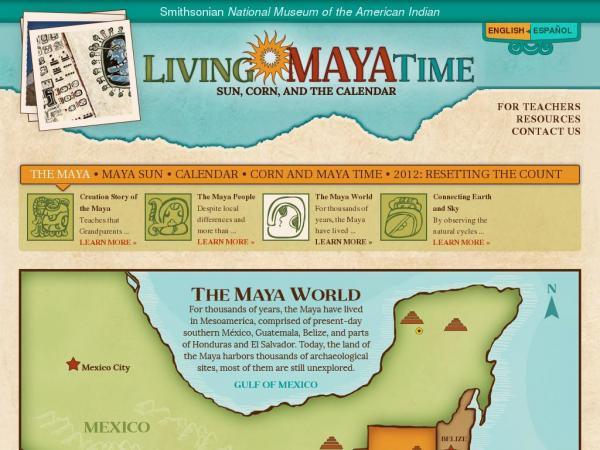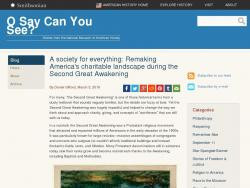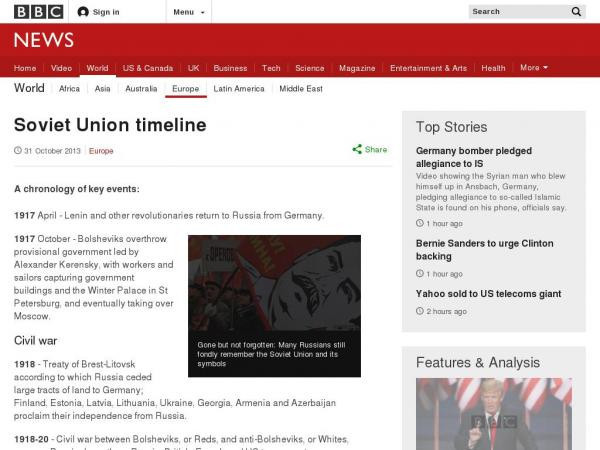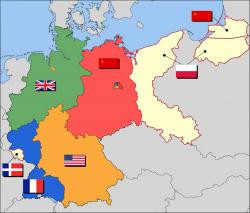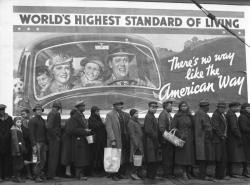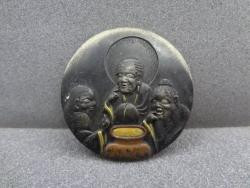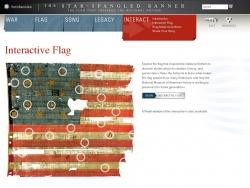Kate Harris
Social Studies teacher
Pittsburgh CAPA
Middle School (13 to 15 years old), High School (16 to 18 years old)
Teacher/Educator
Language Arts And English, Civics, Literature, Cultures, Economics, Social Studies, Geography, Writing, US History, Arts, Other
I'm a history-lover, art fan, and bookworm. I taught high school history (U.S. History and World Religions) for ten years in North Carolina, teach currently in Pittsburgh, PA, and am working to help teachers make the most of this new resource!
Kate Harris's collections
The Mughal Empire
<p>What is the role of art and culture in the expansion of nations or empires? This collection traces the general history of the Mughal Empire and its influence on Indian art. The Mughals were a dynasty of Islamic leaders who conquered India in the 16th and 17th centuries. Their blend of influences and the stylistic preferences of the emperors created a distinct style. </p><p>Guiding questions to consider are:</p><p>How did the Mughals assert their authority over and create a sense of unity within India?</p><p>Why is art so important to powerful leaders, and how can they influence artistic styles?</p><p>Tags: religion, culture, syncretism, Islam, Muslim, India, Hindu, cause effect, chronology</p>
 Kate Harris
Kate Harris
14
From Ancient India to a Studio Near You: Yoga's History
<p>This collection explores yoga's roots in ancient India and how its practice has changed as it has migrated to the West. There are questions embedded throughout the collection, which includes readings, images, links to outside websites, video, and a podcast. </p><p>Essential questions ask:</p><p>What are the roots of the practice of yoga? </p><p>Who claims to have invented it and what were the original goals?</p><p>How did it make its way to the western world and how has it changed through that process?</p><p>Tags: Hindu, Hinduism, India, religion, exercise</p>
 Kate Harris
Kate Harris
13
The History and Spread of Islam
This collection can be used by students to explore the founding, history, and spread of Islam. Includes short informational texts paired with artifacts from around the globe and some links to additional resources. Students are tasked with tracking the countries that are mentioned on a map, taking notes on how the religion spread, and how the religion may have changed as it spread to new areas and ethnic groups. There is a quiz to assess their understanding of these concepts at the end.
The guiding questions for this collection are:
1) Where was Islam founded and where did it spread?
2) How did the religion spread from place to place?
3) How were the practices and the beliefs adapted by the people of different geographic areas?
 Kate Harris
Kate Harris
36
The Smithsonian in World War I
<p>Across the nation, public institutions like museums, universities, and government facilities showed the impact of World War One. Not only did private individuals find their lives changed by enlisting to fight or taking on new "war work," but buildings and public spaces also changed by shifting over to the war cause. This collection reveals how life at the Smithsonian Institution changed in order to support the war effort from 1914-1918 through artifacts and archival materials.</p><p>Questions to consider:</p><p>-<strong>How do Americans sacrifice during wartime? Has it changed over time?</strong></p><p>-How did the Smithsonian Institution and its employees adapt during wartime?</p><p>-What does the experience chronicled here tell us about that of other Americans? What is still missing?</p><p>Tags: WWI, World War One, homefront, war work, Smithsonian, museum</p>
 Kate Harris
Kate Harris
17
Why did the Second Great Awakening inspire reform movements?
<p>The Second Great Awakening was a religious revival movement in the first half of the 19th century. It emphasized emotion and enthusiasm, but also democracy: new religious denominations emerged that restructured churches to allow for more people involved in leadership, an emphasis on man's equality before god, and personal relationships with Christ (meaning less authority on the part of a minister or priest). There was also a belief that the Second Coming was imminent, and society must be improved before that time. Women were heavily involved in the 2nd Great Awakening movement, converting in large movements and taking on leadership roles in service committees and reform work. </p><p>Students and teachers might use this collection as a topical resource to explore:<strong> Why and how did the Second Great Awakening inspired a range of antebellum reform movements?</strong></p><p>Other questions that might support this inquiry include:</p><ul><li>How are concepts of democracy and equality important to both the Second Great Awakening and the rise of reform movements?</li><li>Why do you think women were often leaders in antebellum reform movements?</li><li>More Americans were moving westward during this period. How do you think that impacted the religious revival movement?</li><li>Can you hypothesize a connection between the increase in utopian societies during this time and the growing reform and religious movements?</li></ul><p>Tags: abolition, temperance, women's rights, women's suffrage, second coming, antebellum reform, asylum and prison reform, education, 2GA</p>
 Kate Harris
Kate Harris
35
The Scopes Trial
<p>This collection of photographs provides insight into the Scopes Trial in 1925. "Marcel C. LaFollette, an independent scholar, historian and Smithsonian volunteer uncovered rare, unpublished photographs of the 1925 Tennessee vs. John Scopes “Monkey Trial" in the Smithsonian Institution Archives. The nitrate negatives, including portraits of trial participants, and images from the trial itself and significant places in Dayton, were discovered in archival material donated to the Smithsonian by Science Service in 1971."</p><p>"Science Service is a Washington, D.C.-based organization founded in 1921 for the promotion of science writing and information about science in the media. Watson Davis (1896-1967), the Science Service managing editor, took these photographs when covering the Scopes trial as a reporter. In the 1925 trial, John Scopes was tried and convicted for violating a state law prohibiting the teaching of the theory of evolution. William Jennings Bryan served on the prosecution team, and Clarence Darrow defended Scopes."</p><p>Collection users might consider the following questions:</p><p>-How effective are court cases at swaying popular opinion? Can you think of other examples of this?</p><p><span></span>-How did this trial reflect the changes in mass media, science, and religion occurring in the 1920s?</p><p>-It is said that Bryan "won the case, but lost the argument." What is meant by that statement?</p><p>-How do these archival photographs challenge previously held conceptions of the case?</p><p>Source for text in quotes throughout collection: Smithsonian Institution Archives. Web. Accessed 16 Aug. 2016 <a href="http://siarchives.si.edu/research/scopes.html">http://siarchives.si.edu/research/scopes.html</a>.</p>
 Kate Harris
Kate Harris
14
The End of the Cold War
This teaching collection chronicles the events and people associated with the end of the Cold War. Suggested teaching strategies are embedded throughout.
Guiding questions include:
-Who started the "revolutions" of 1989--Gorbachev and his reforms? People in Eastern Europe?
-Evaluate the roles of the United States and the Reagan and Bush administrations, as well as the changes within the Soviet Union, in bringing about the end of the Cold War.
-Why did the Cold War end?
-What were the costs of the Cold War, both human and material?
-What are the legacies/lessons of the Cold War?
-What uncertainties or questions remained as the Cold War came to a close? What would come to characterize the 'New World Order' that followed?
Tags: Wilson Center, Cold War, Reagan, Gorbachev, glasnost, perestroika, revolution, Soviet Union, USSR, Communism
 Kate Harris
Kate Harris
21
Building the Berlin Wall
This teaching collection explores the Berlin crisis leading to the building of the Berlin Wall. It addresses the following guiding questions through primary/secondary sources and teaching suggestions:
-Why was Berlin the center of crisis in between 1958-1961?
-Why did the Soviet Union sanction the construction of the Berlin Wall?
-Why did the United States allow it to happen?
-How did the Wall affect the lives of East and West Berliners?
-Does the end (no more crises in Berlin) justify the means (the Wall)?
-How does this incident reflect the greater issues of the Cold War?
Students will practice reading primary sources and analyzing multiple perspectives.
Tags: Wilson Center, Cold War, Khruschev, Stalin, Berlin, Wall, Kennedy, Soviet Union, USSR, Communism
 Kate Harris
Kate Harris
17
The Olympics and the Cold War
This learner resource includes artifacts and archival documents regarding the 1980, 1984, and 1988 Olympics. Students will explore these materials in order to develop an understanding of how the Olympics were used as a platform for the United States and the Soviet Union to display political ideals during the Cold War. Comprehension and analysis questions are embedded throughout.
Tags: Wilson Center, Cold War, Olympics, hockey, Miracle on Ice, boycott, Afghanistan, Soviet Union, USSR, Communism
 Kate Harris
Kate Harris
10
Sports and the African-American Civil Rights Movement
Popular athletes can reflect the broader societal change that is going on around them; they can also be instigators of that change. This collection traces the African-American civil rights movement through the 20th century and touches on athletes like Jack Johnson, Jackie Robinson, and Muhammad Ali. Students can use the collection independently to learn about this subject and complete the timeline worksheet included at the end.
Students will be asked to generalize about the civil rights movement during different time periods in American history, noting the shifts in focus, strategies, and success. In addition, they will draw parallels between events in sports history and the civil rights movement.
 Kate Harris
Kate Harris
18
The Three Vinegar Tasters and Daoism
<p>This collection includes a brief overview of Daoism, Confucianism, and Buddhism. It focuses on the story of Laozi and his ideas about the Dao and the balance between yin and yang. It includes two short passages from the Dao de Jing, assessment questions throughout, and a final task where students create their own collection about Daoism.</p><p>Tags: Dao, Confucius, Tao, Buddha, Laozi, China, religion, philosophy</p>
 Kate Harris
Kate Harris
8
Women's Suffrage Postcards
This is a topical collection of women's suffrage postcards that could be used to supplement lessons on the women's rights movement and/or gender equality. They are also excellent practice in artifact analysis.
Some questions to consider:
-What do these postcards tell us about the arguments for and against women's suffrage?
-Why are so many of the postcards focused on geography?
-Who do you think each postcard is meant to appeal to?
 Kate Harris
Kate Harris
21


